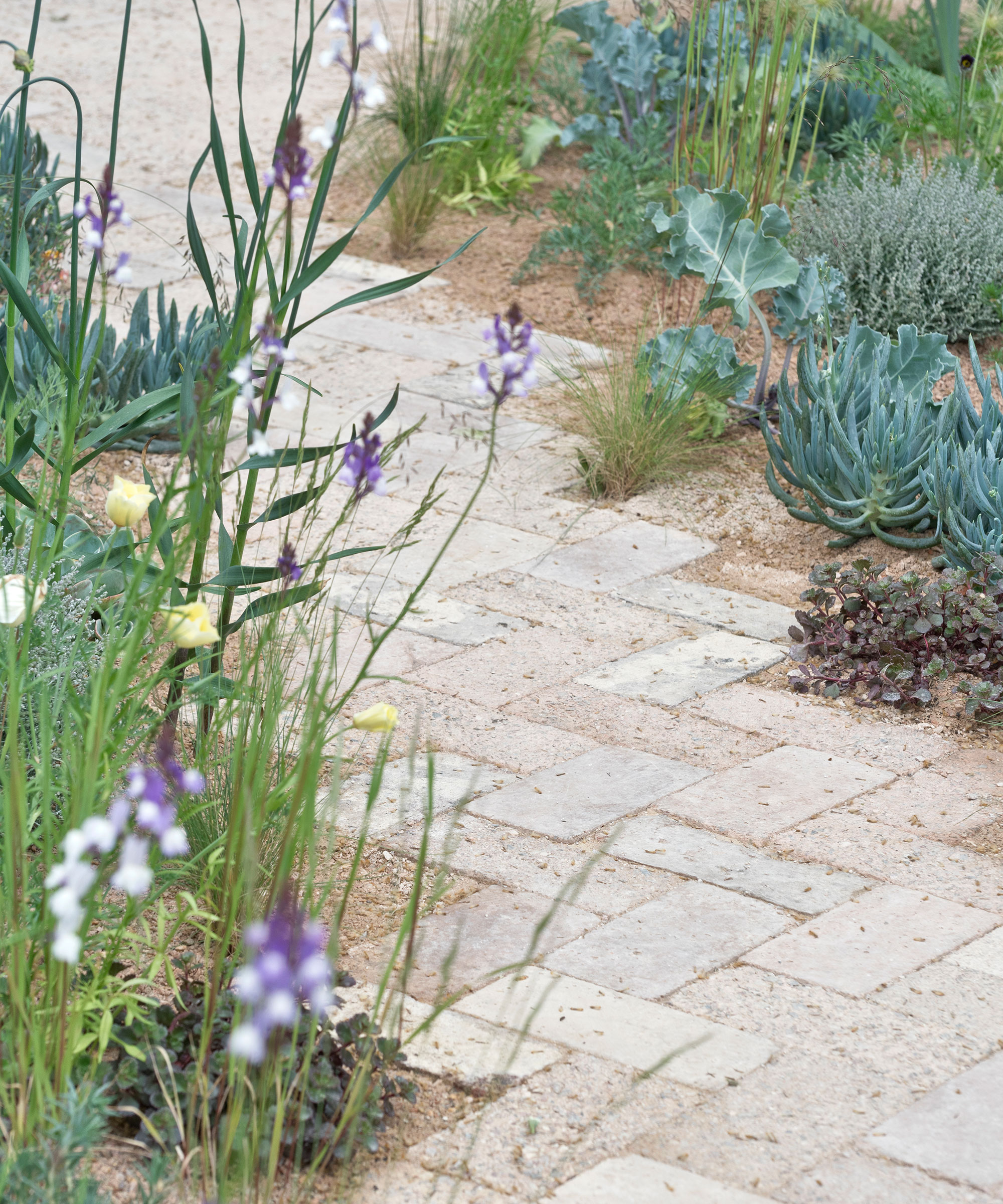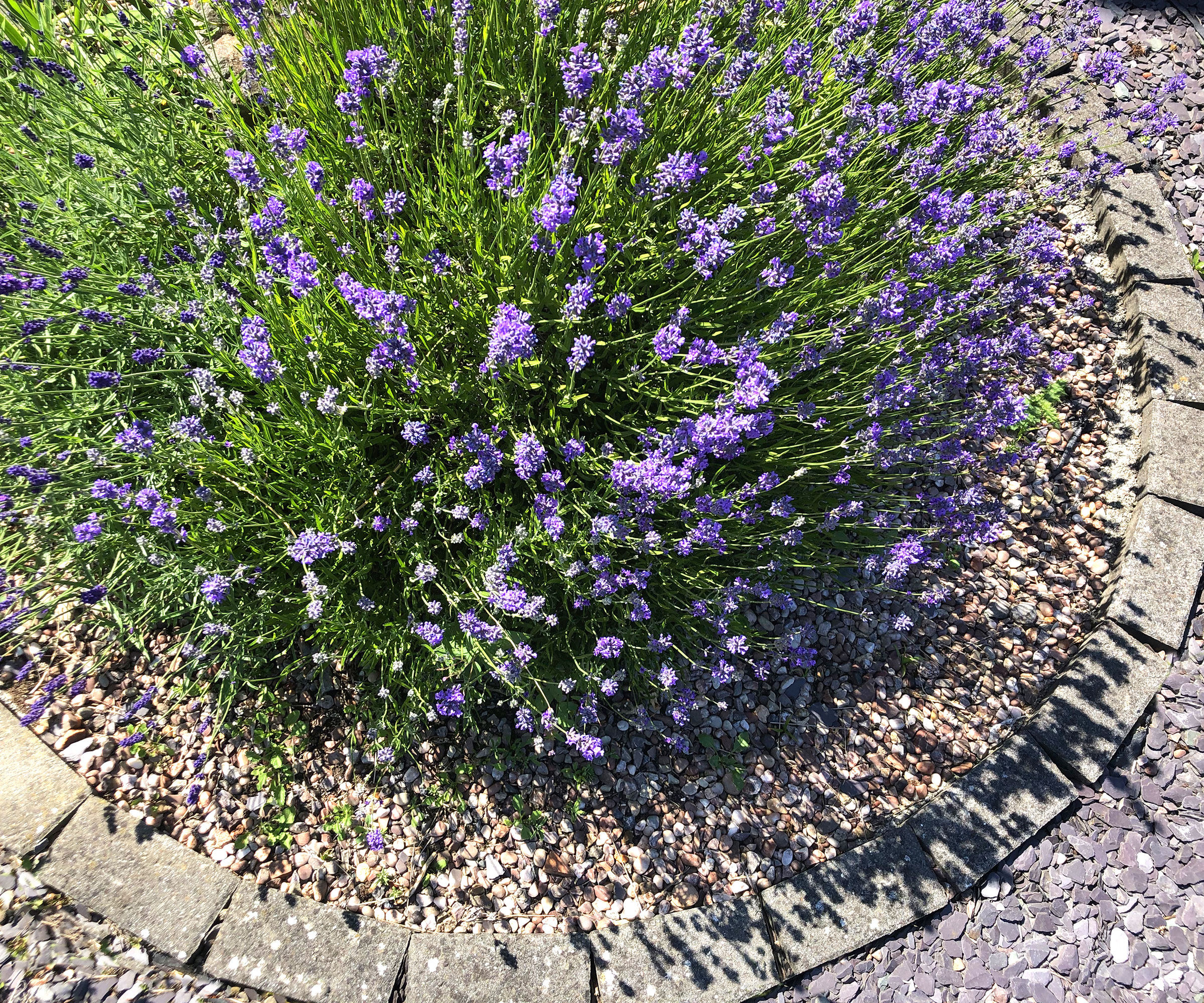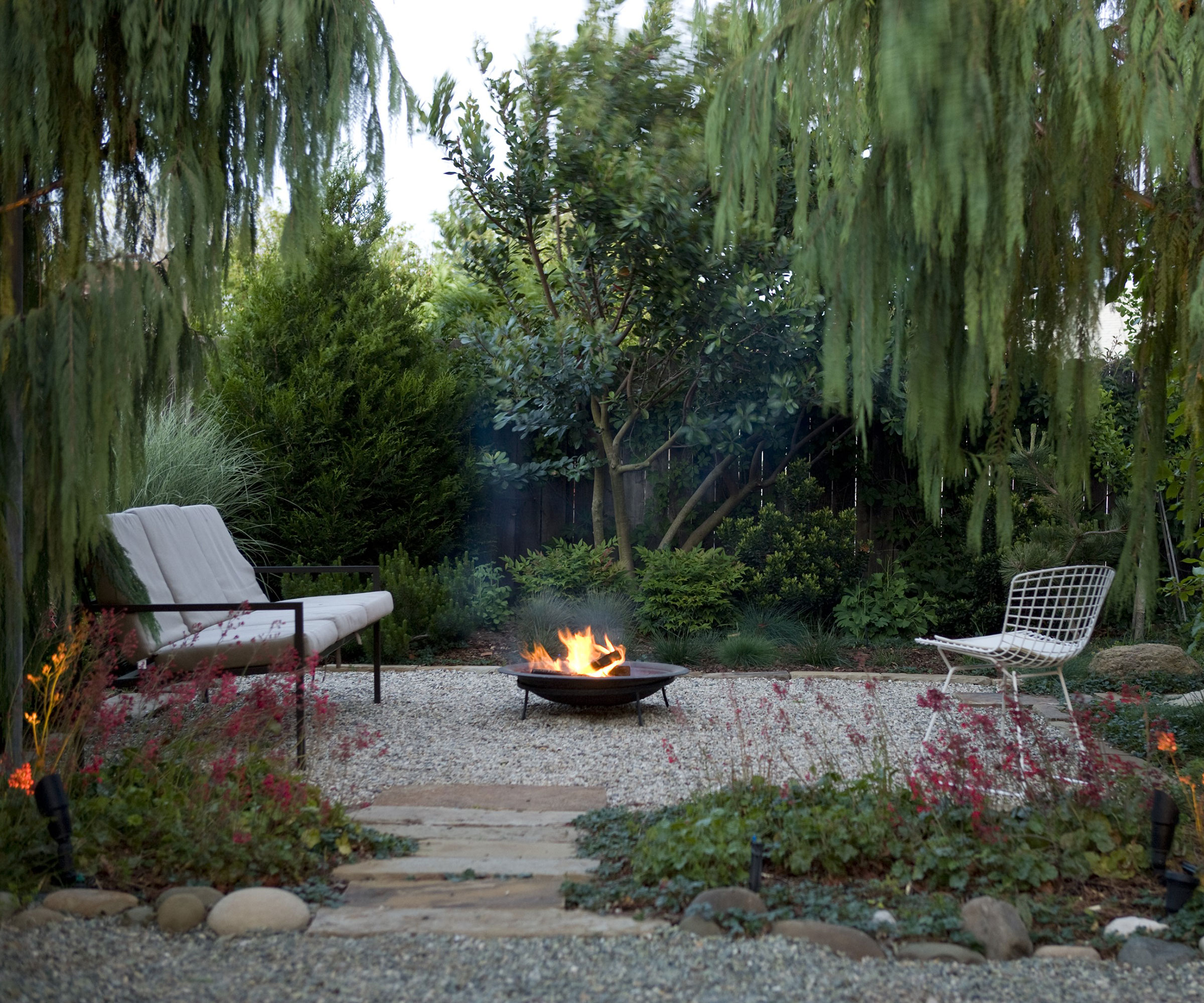How to fireproof your backyard – 10 ways to limit potential fire damage
These fire-resistant landscaping tips will help to protect your yard and home


- 1. Choose non-flammable outdoor furniture
- 2. Remove debris regularly
- 3. Choose plants carefully
- 4. Use hardscaping as a firebreak
- 5. Keep dense shrubs away from your home
- 6. Prune overhanging trees to stop fires spreading
- 7. Water and mow the lawn
- 8. Avoid flammable mulches
- 9. Use fire pits safely
- 10. Clear your gutters of flammable debris
Homeowners have several natural disaster risks to consider, from flooding to tornados and more. But one risk that is unfortunately becoming far more common is fire.
As temperatures increase and summers become more intense, wildfires are set to become regular headline news. Even smaller backyard fires are more likely in warm and dry weather, potentially spreading to your home if certain essential backyard fireproofing steps aren’t followed.
While there are admittedly limits to how far you can protect your home if a huge natural disaster strikes, it's certainly worth taking a few precautions in your backyard to try and minimize any potential damage where possible.

Keeping your yard tidy and free of debris is one of the easiest ways of fireproofing it
10 measures you can take to fireproof your backyard
According to President of Landscape Guys LLC Joe Palumbo, 'We're not only seeing more fires but bigger ones due to having so much fuel in the dry forests. While there are no guarantees when it comes to fire, you can do some relatively simple tasks to help stop your home from adding fuel to the fire.'
From keeping on top of pruning to carefully selecting the materials you use in your backyard landscaping, these are the simple measures you should be considering to help fireproof a backyard.
1. Choose non-flammable outdoor furniture
When choosing new outdoor furniture, design and comfort are usually top of the list. But if you live in a region or climate where fires are a common risk, or have furniture placed near a fire pit, you’ll need to factor that into your decision-making.
Outdoor furniture is often made from combustible materials like wood or wicker that can quickly catch alight. To make matters worse, they are usually placed close to your home on decks or patios and produce large flames that could quickly spread indoors.
Design expertise in your inbox – from inspiring decorating ideas and beautiful celebrity homes to practical gardening advice and shopping round-ups.
Sean Coffey from Regency Fireplace Products, which supplies outdoor gas fireplaces, suggests avoiding softwood in particular. 'Don’t use cedar chairs or cedar-based furniture around fire pits. Cedar is considered a softwood, and softwoods are more susceptible to flames compared to hardwoods such as maple.'
Instead, a better option is to opt for non-flammable outdoor furniture, such as outdoor sets made from aluminum or wrought iron, like this modern Portside aluminum collection from West Elm. As these are often covered in soft furnishings like cushions or throws, make sure you keep those elements indoors whenever fire is a concern.
2. Remove debris regularly
Getting rid of weeds and tidying flower beds is a common garden chore that few look forward to. But if you’re thinking about skipping your cleaning session in summer, you may want to think again.
Gene Caballero, co-founder of GreenPal, says, 'dry leaves, twigs, and other dead plant material can quickly turn into fire fuel. Regularly clear out garden debris, especially in the hot, dry season.'
'What I've learned from working with countless landscapers and homeowners is that regular maintenance is key,' he adds.
3. Choose plants carefully
Plants that hold onto moisture are less flammable than lush plants with plenty of thin or dry leaves. They burn slower and are less likely to spread flames quickly to other parts of your garden or to your home.
Succulents are an ideal choice for fire-resistant landscaping, especially succulent ground cover plants like sedums to help lower flames. Other popular options include aloes, yucca or drought-tolerant planting favorites like rosemary and lavender.
That doesn’t mean you can’t plant anything considered highly flammable. Experts from Frontline Wildfire Defense recommend ‘defensible space landscaping’ just in the area closest to your home. This is known as ignition zone 1 – between 5 and 35 feet from exterior walls. Keep any highly combustible plants beyond this zone to protect your home as much as possible.

Opt for plants that are likely to burn slower if you live an area that is prone to fires
4. Use hardscaping as a firebreak
Hardscaping is an important part of landscaping a backyard, but it can double as a firebreak around your house when used effectively. Gravel garden pathways, paved patio flooring and even decorative stone garden walls can prevent fire from spreading across your backyard and to your home.
Ben Gold, founder of Recommended Home Buyers, suggests incorporating 'non-flammable materials like rocks, pavers, or gravel into your backyard design. This not only creates an attractive aesthetic but can also serve as a firebreak.'
There are plenty of interesting ways to create a gravel garden or to landscape with rocks, so fireproofing your backyard doesn't have to mean compromising on the overall look of your outdoor space.

Using pavers and gravel in your landscaping can help to slow down the spread of fire. Garden design by Sarah Price Landscapes
5. Keep dense shrubs away from your home
When searching for fire-resistant plants, most shrubs and evergreen shrubs unfortunately appear near the bottom of the list.
Their structure makes them inherently riskier, with leaves and branches close to the ground and quick to set alight. They are also taller than common bedding plants, raising flames and potentially spreading the fire to nearby trees.
These characteristics mean it's important to keep shrubs away from the immediate area around your home if you live in an area that's prone to lots of fires. Keep them as border plants to enjoy from afar instead.
6. Prune overhanging trees to stop fires spreading
Whether they are evergreen trees or fast-growing flowering trees, these plants are often considered to be the backbone of the backyard. But when they are close to your home, they can pose a fire danger, especially during dry seasons when branches become dry and brittle.
Joe Palumbo recommends trimming trees away from your home for safety. 'If you live in a fire-prone area and have mature trees that hang over your home's roof, you'll want to call an arborist and have them remove those limbs that are close.'
'When there are canopy fires, which are common due to dry pine trees, fires can transfer from burning tree canopies to your roof. By removing those limbs and creating an imaginary bubble around your home, you're giving yourself some more breathing room,' says Joe.

Regularly prune trees that are overhanging your home to keep it protected from fire
7. Water and mow the lawn
Although large stretches of lawn aren't always dangerous, they can spread fires fast if not maintained with the correct lawn care routine. Tall or dry grasses catch alight quickly and can turn a small problem next to a fire pit or grill into a massive problem that takes over your entire backyard.
To prevent this issue, keep your lawn short and consider watering grass during warm and dry months. Higher moisture content in the soil and grass blades will slow the spread of any flames.
An automatic sprinkler system such as the Rain Bird in-ground sprinkler kit from Amazon will make light work of your lawn watering needs.
8. Avoid flammable mulches
Mulching is a beneficial gardening practice that helps retain moisture in the soil, limits problems with weeds, and improves the overall aesthetic of your beds. Moisture retention is effective in slowing the spread of fire, but can have the opposite effect if you're using the wrong type of mulch.
There are instances where mulch can catch fire in high temperatures, so there are some precautions you should take. 'Use non-flammable mulches like gravel or rock instead of wood chips or pine straw near your home and other buildings,' says Gene Caballero.

Gravel is a good non-flammable mulch for your flower beds
9. Use fire pits safely
Brandon Frady, insurance expert from Clearsurance, explains the importance of fire pit safety when fireproofing your backyard.
'If you have a backyard fire pit, there should be a non-flammable area around it. For example, you should consider gravel or concrete for your fire pit area. Make sure your grill is also on a non-flammable surface.'
'When you're grilling or enjoy a backyard fire, keep a hose nearby so you can quickly extinguish flames,' he adds.

Gravel is a practical choice for a fire pit patio area
10. Clear your gutters of flammable debris
Another maintenance task you’ll need to stay on top of to prevent the spread of fire is cleaning your gutters. Joe Palumbo recommends cleaning out debris before fire season starts.
'If you live where pine needles or very dry leaves fall often (some oaks fall throughout the year) they can accumulate in your gutters that haven't seen rain. Embers from wildfires are known to travel very far from where the actual fire is. Unfortunately, a fire that may have missed you could reignite on your property and flare up because one of those floating embers reached your dry gutters.'
As the experts at Frontline Wildfire Defense explain, 'there is no way to ensure a yard is 100% fireproof.' However, if you’re concerned about fire in your backyard, or perhaps have never considered the need to fireproof before, these essential steps will certainly help to keep you and your home safe.

Madison is a garden writer and editor, covering all things outdoors and lifestyle. After completing a BA in History and Political Science, she transformed her years-long passion for plants into a career writing for both digital and print publications. As garden editor of several print titles, Madison focuses on trends and developments in the continuously expanding gardening industry. When not typing away at her desk, she tends to her ever-growing houseplant collection and travels frequently, photographing and reporting on gardens around the world.